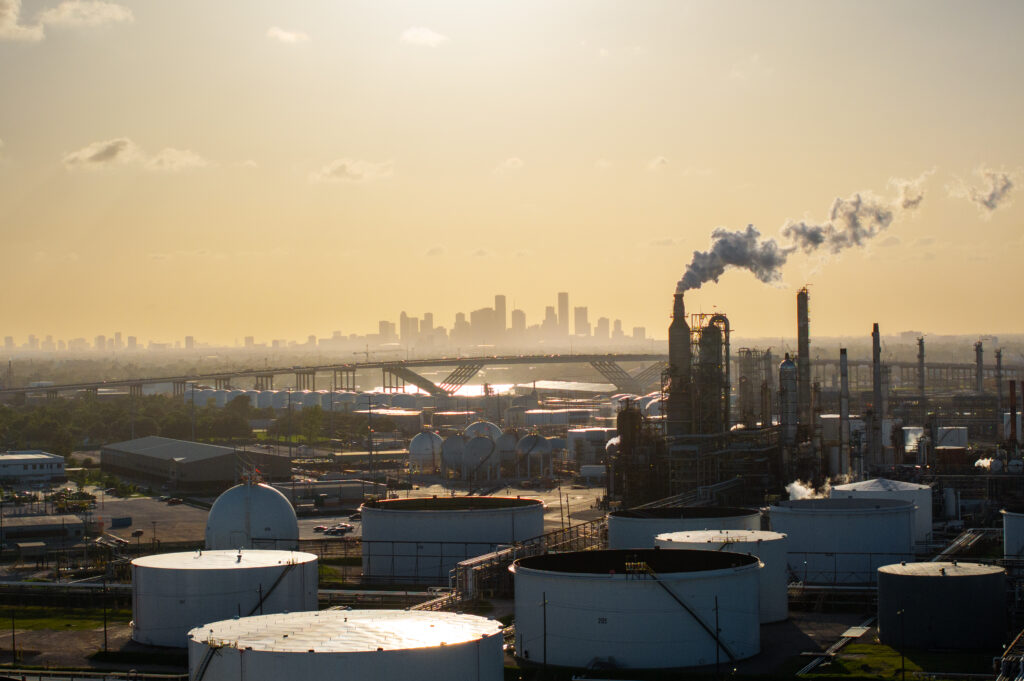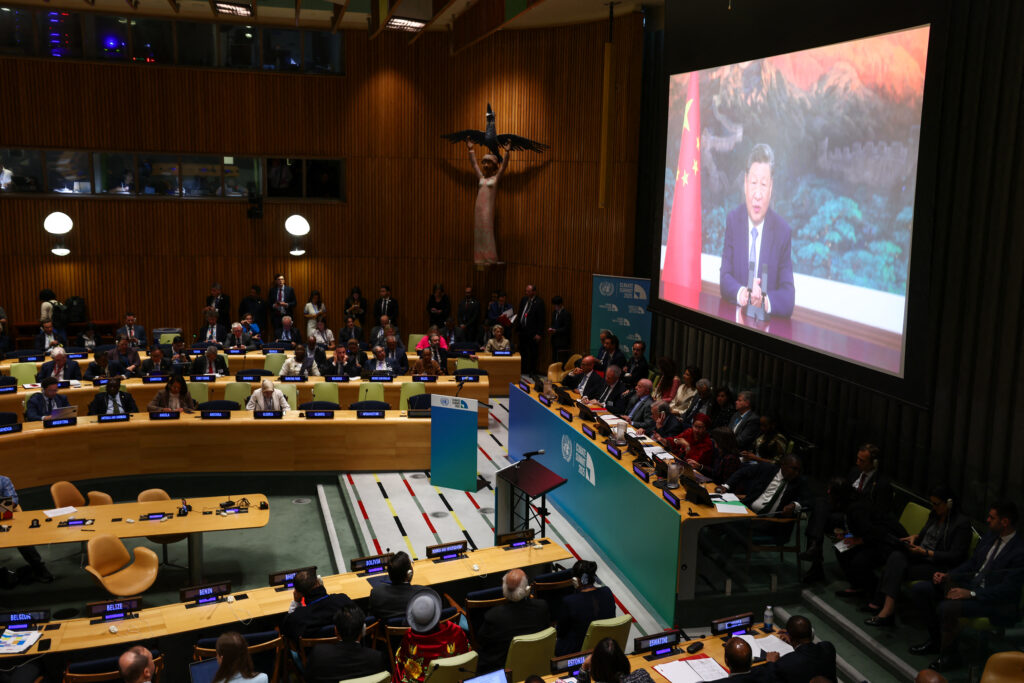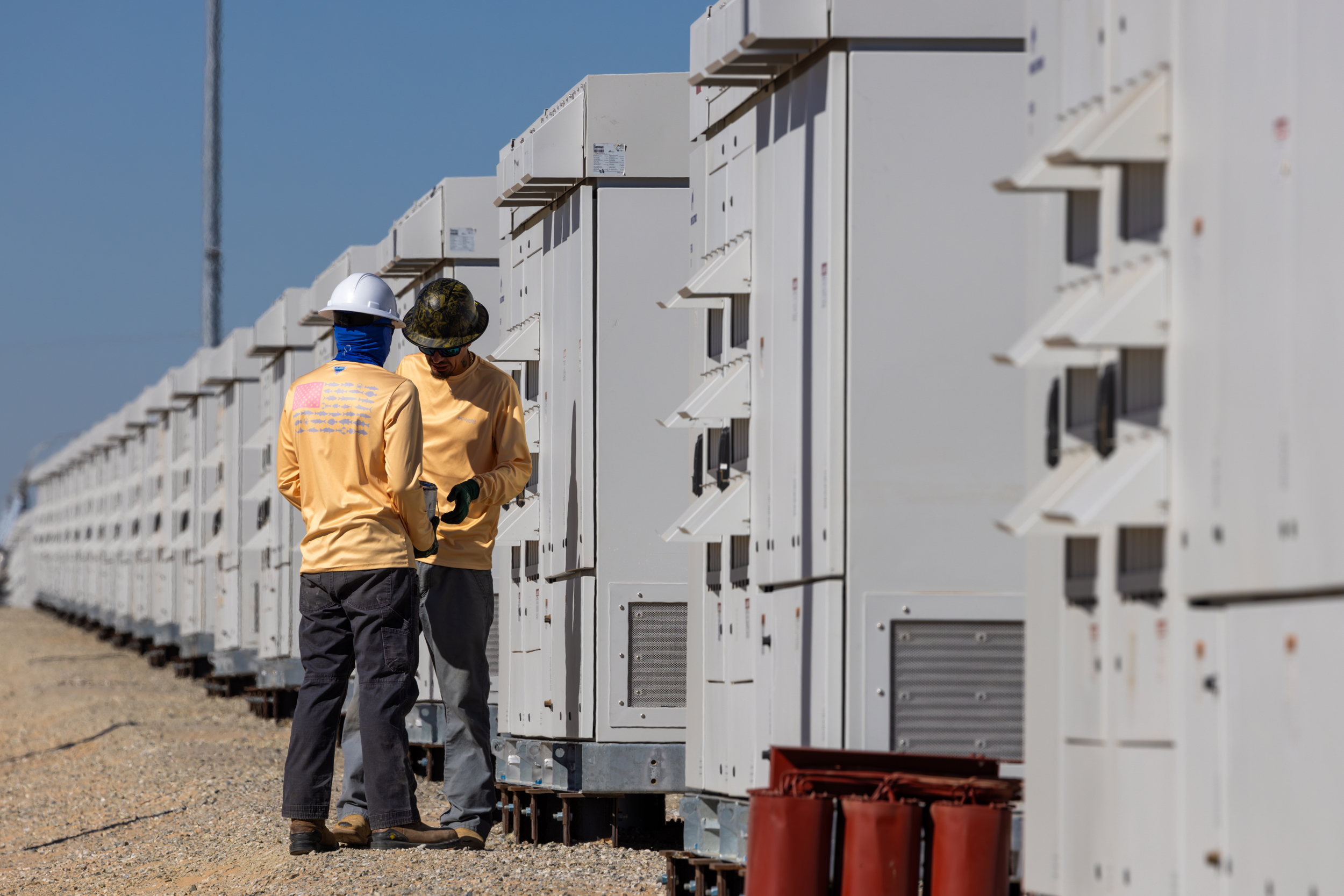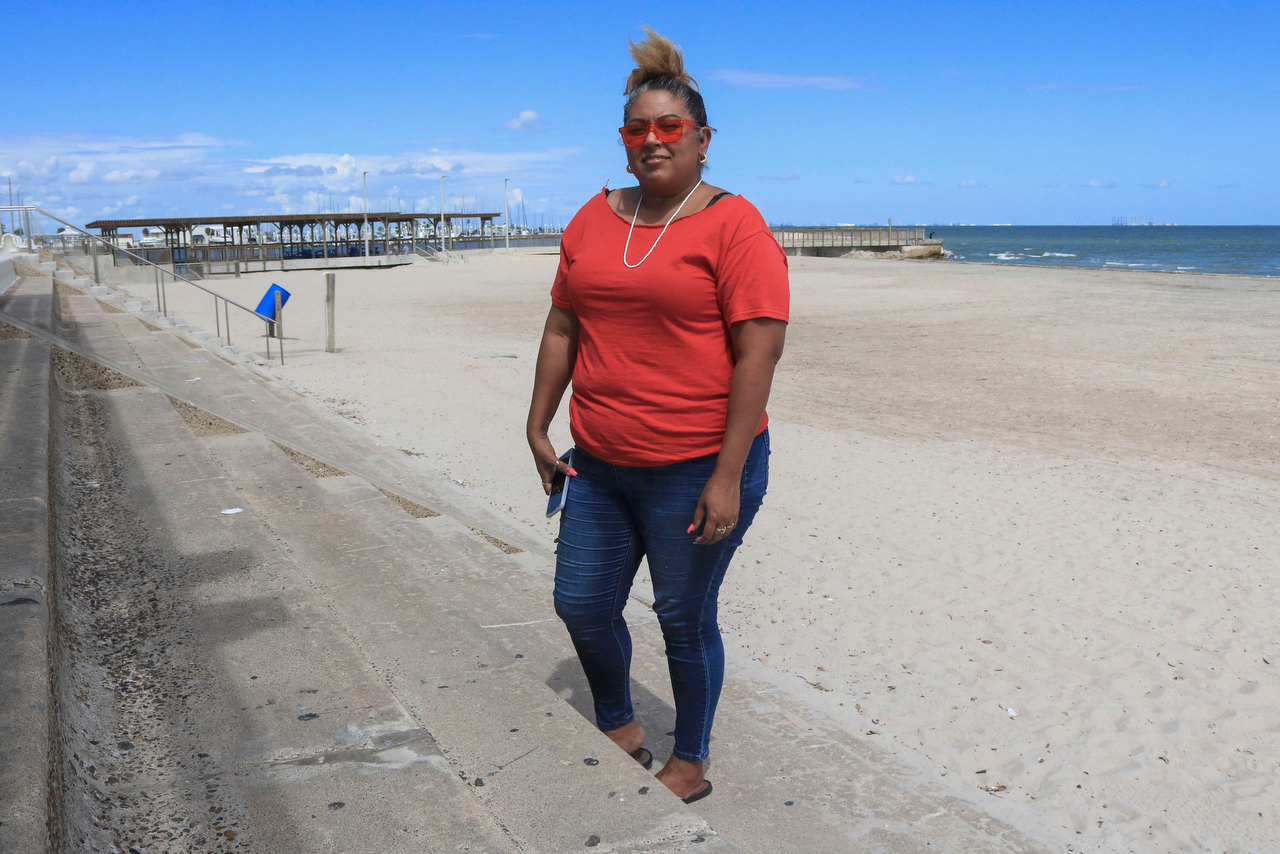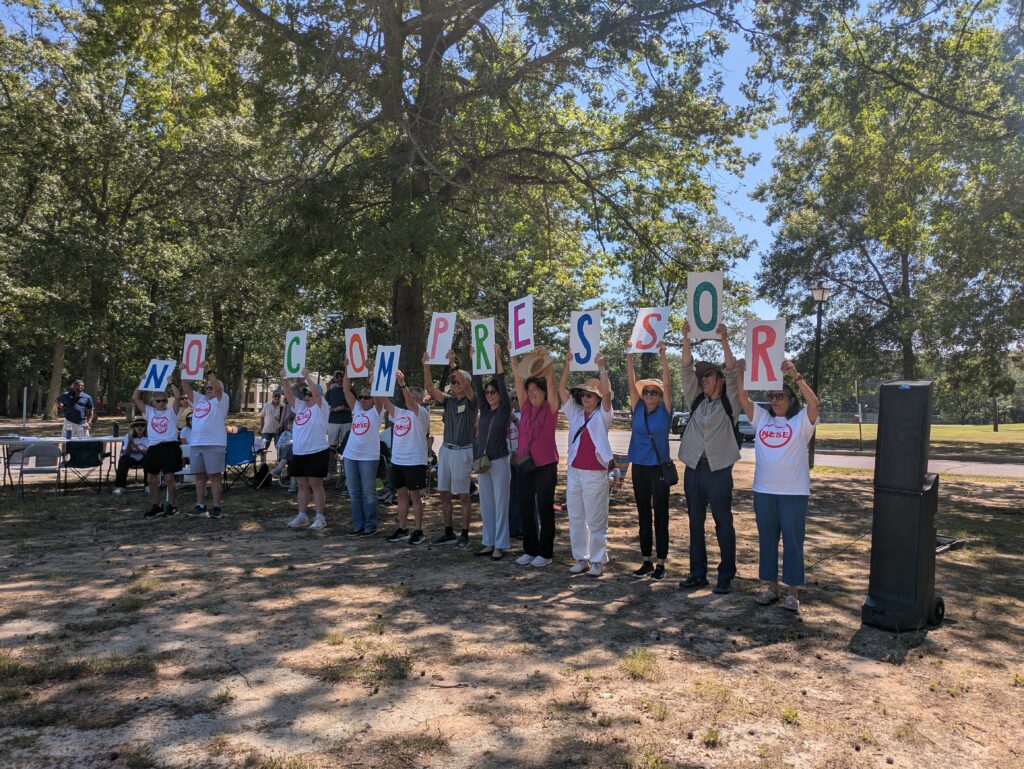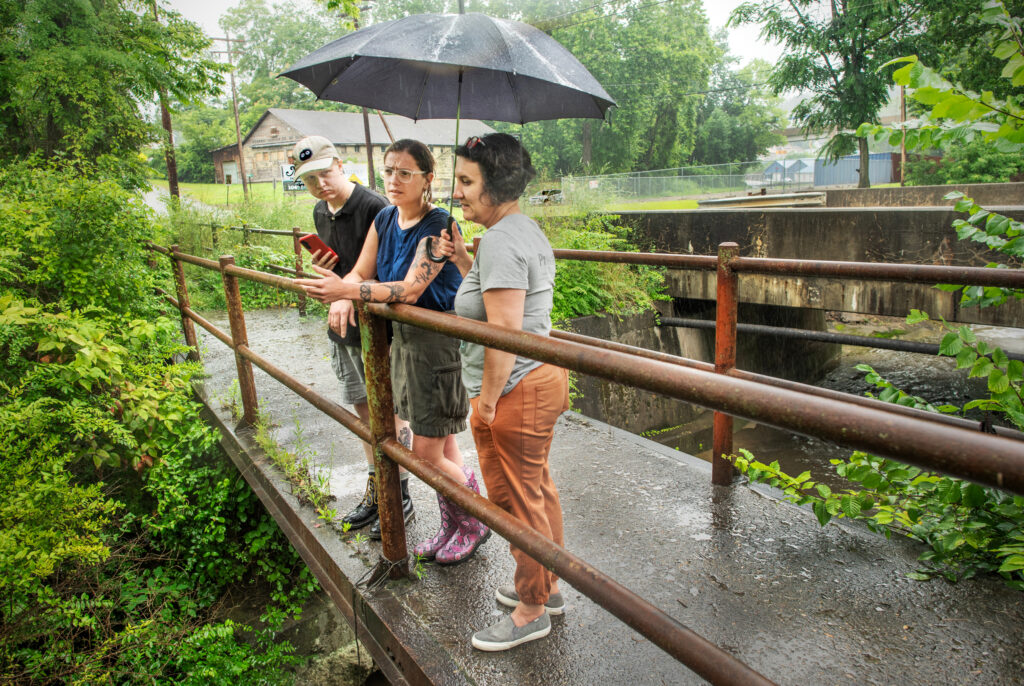EL PASO, Texas—From one end of the U.S.-Mexico border to the other, water and wastewater infrastructure are perennial problems.
In the Rio Grande Valley, farmers are running out of time to get more water from Mexico for their crops. In Imperial Beach, California, residents are fed up with raw sewage flowing over the border from Tijuana. The Colorado River states and Mexico are haggling over limited water.
In the final weeks of Joe Biden’s presidency, the administration’s record on border environmental issues is still up for debate. Some will remember the record infrastructure investments that allowed many border residents to have drinking water in their homes for the first time. Or the agreements the U.S. struck with Mexico to share Colorado River and Rio Grande water. Others are left with the stench of sewage in their noses, as the flows from Tijuana into South Bay California continue unabated and solutions are still months or years away.
All these problems require collaboration with Mexico, which recently inaugurated environmental scientist Claudia Sheinbaum as its first woman president. She has pledged to prioritize water policy. Donald Trump will shake up that diplomatic relationship when he returns to the White House in January. Trump has promised to slam Mexico, the U.S.’s top trade partner, with export tariffs.
There is no federal agency better acquainted with border environmental and infrastructure challenges than the International Boundary and Water Commission, a binational entity with its U.S. section headquartered in El Paso. Biden appointed Maria-Elena Giner as the U.S. Commissioner of the IBWC in August 2021. She spoke with Inside Climate News about her first three years on the job, what lies ahead and her hopes to keep momentum going through the change in administration.
“There are areas of opportunities to be found,” she said at IBWC headquarters in El Paso. “I have an ambition for the region, that the region deserves good water quality, consistent water deliveries, pollution prevention and resilient infrastructure.”
“Angry Farmers and Angry Surfers”
The U.S. IBWC headquarters occupies an unassuming office building wedged between Interstate 10 and the Franklin Mountains in El Paso. The office is just miles from where the water boundary between the U.S. and Mexico—the Rio Grande—becomes a land boundary cutting through the desert.
The Mexican section of the IBWC is headquartered in Ciudad Juárez, Chihuahua. Each section is led by a commissioner, who must be an engineer. The IBWC is charged with applying the boundary and water treaties between the United States and Mexico and resolving any related disputes.
Giner’s upbringing and professional life have bridged both sides of the border. She grew up in Ciudad Juárez and attended Catholic school in El Paso. She studied in the United States and worked developing infrastructure in Mexico for two decades.
She said helping out at the family business—local supermarkets—from a young age taught her how to relate to all kinds of people. “I think that gave me a certain sensitivity to the people we serve,” she said.
IBWC manages the distribution of Rio Grande and Colorado River water between the U.S. and Mexico, operates international dams and reservoirs, manages canals, levees and other border infrastructure and addresses border water quality and sanitation problems.

Giner is the second woman and the first Latina to lead the IBWC. She studied civil engineering as an undergraduate and went on to earn an MBA from the University of Texas, El Paso, and a doctorate in public policy from the University of Texas, Austin.
“The greatest variable in any project is not technical,” she said. “It’s people and it’s legal and it’s financial.”
With a full head of curls and dark-framed glasses, Giner remains amiable and good-humored, even during tense public meetings. She speaks authoritatively, but not sternly, and takes pride in her command of the technical subject matter. Giner is as comfortable in the technical Spanish of finance and contracts as she is in the informal Spanglish of the border region.
These people skills have been essential to take on two of the thorniest issues in IBWC’s portfolio: the ongoing sewage crisis in California’s South Bay communities and the delivery of Rio Grande water to South Texas.
“Half my job is showing up with the public,” she said. “I talk to angry farmers and angry surfers.”
On the Rio Grande, a 1944 treaty obligates Mexico to deliver a certain amount of water to the United States from its tributaries every five years. The next cycle ends in October 2025 and Mexico is still far behind in deliveries. The water dispute has left farmers in the Rio Grande Valley scrambling, and cities seeking alternative water supplies beyond the Rio Grande.
But Giner points to recent progress. In November, the U.S. and Mexico signed Minute 331 to improve reliability of Mexico’s water deliveries. The U.S. has also accepted water deliveries from the San Juan River.
“There was so much crisis going on that had accumulated over decades,” she said.


In South Bay, California, residents have been subject to years of odors and health hazards from sewage flowing over the border from the Tijuana River. The problem dates back decades, after a wastewater treatment plant in California managed by the IBWC was left in disrepair. With the wastewater treatment plant on the Mexican side also non-operational, millions and even billions of gallons of sewage can flow into California every day, impacting communities including San Ysidro, Imperial Beach and Coronado.
Giner called the disrepair at the IBWC treatment plant “unacceptable.”
“It didn’t happen on my watch. It didn’t happen on the last administration’s watch,” she said. “It goes way back… what we’re trying to do is catch up.”
The IBWC announced on Dec. 17 that the plant had regained permit compliance in November. Repairs and upgrades at the plant continue.
Looking Ahead on Border Environmental Policy
Some IBWC commissioners have held their posts through multiple presidential administrations, while others have served for only one president. The Trump transition team has not commented on the IBWC, which is unsurprising for such a small federal agency, but Giner said she has “great advocates on both sides of the aisle” and is prepared to continue to serve as commissioner if given the opportunity.
IBWC operates under the guidance of the Secretary of State. Incoming President Trump has nominated Florida Senator Marco Rubio for secretary of state and former U.S. ambassador to Mexico Christopher Landau as his deputy. Rubio would be the first Latino to hold the position and has taken hard-line positions against left-wing governments in Latin America. If confirmed, Rubio and Landau are expected to take tough stances toward Mexico on everything from migration to drug trafficking.
Local advocates want to be sure water and environmental issues stay on the binational agenda.
Serge Dedina is the former mayor of Imperial Beach, California, and once brought a lawsuit against the IBWC for its failure to keep the wastewater treatment plant up to code. He lamented the slow process to repair the treatment plant. The beaches in Imperial Beach have been closed for several years because of the health risks.
“Local residents feel they have been abandoned by these agencies,” he said.
But Dedina commended Giner’s work. “She’s been leagues ahead of her predecessors,” he said. “She’s not afraid to actually engage with people being affected.”
This story is funded by readers like you.
Our nonprofit newsroom provides award-winning climate coverage free of charge and advertising. We rely on donations from readers like you to keep going. Please donate now to support our work.
Donate Now
Dedina would like to see Giner remain as commissioner under Trump. He said that making progress on border environmental problems requires bipartisan effort.
“We all work together whether Republicans or Democrats,” he said. “It’s just about keeping our beaches open and making sure people don’t get sick.”
Leon Benham, executive director of Citizens for Coastal Conservancy in Imperial Beach, said the federal government’s response to what he called “a tsunami of sewage” has lacked urgency.
“There’s a big push by a lot of us to ask President Trump to use his presidential authority and create an executive emergency,” he said. “Biden has been unwilling to use his executive authority and (California Gov.) Gavin Newsom has not been using his executive authority.”
Rio Grande Valley residents are following the water dispute with Mexico closely. Dante Galeazzi, president and CEO of the Texas International Produce Association in Mission, Texas, said that farmers can’t place orders for seeds if they don’t know how much water they will have next year.
“South Texas is hurting,” he said. “Our community is coming up against a precipice in which we’re not going to be able to grow or industries like agriculture are going to continue to suffer.”


Galeazzi said the problem extends to municipal governments, which are seeking alternative water sources beyond the Rio Grande. He pointed out the dispute also hurts Mexican border states like Nuevo León and Tamaulipas that rely on water deliveries from the upstream state of Chihuahua.
“We as a community and as a region have to invest in water. There’s no other choice,” he said.
Galeazzi urged the Trump administration to make the Rio Grande water crisis a priority. He expected that Mexico’s new president, Claudia Sheinbaum, will engage the Trump administration on the water issue once he takes office.
Funding for Border Infrastructure Needs
Some 15 million people live on either side of the U.S.-Mexico border. The border region’s population grew rapidly after the 1994 passage of the North American Free Trade Act, which fueled export-oriented industrial development in the Mexican border cities. But infrastructure has struggled to keep up with this rapid growth, especially in areas with high poverty rates. In 2020, the poverty rates in 22 of the 23 U.S. counties along the border were higher than the national average, according to census data.
A 2015 study found that over 130,000 residents in U.S. border counties lived in neighborhoods known as colonias that lack potable water or sewer services. The Bipartisan Infrastructure Law and the Inflation Reduction Act provided significant funding for water and wastewater infrastructure in the border region.
Officials in El Paso County, Texas, credited federal funds with making progress to connect residents with running water and sewer lines. One of those communities was Vinton, where 360 households benefited from first-time water and sewer services.
One funder of that project was the North American Development Bank (NADBank), a binational financial institution created by the U.S. and Mexican governments. NADBank was a side agreement of NAFTA that funds and finances infrastructure and environmental projects in the border region.
Water and wastewater infrastructure have long been priorities for the bank, which is based in San Antonio. NADBank’s managing director John Beckham said the bank will be investing more in agricultural efficiency, to help farmers in places like the Rio Grande Valley conserve water. NADBank administers the U.S.-Mexico Border Water Infrastructure Program, which receives federal funding.
“There is a trans-border support for this program to help border communities on both sides,” Beckham said. “Whether it’s the California delegation, the Texas delegation, or the Arizona delegation.”
Beckham was also optimistic about the Sheinbaum administration. In addition to water infrastructure, he sees increased opportunities for private sector investment in renewable energy in Mexico, which had stalled in the previous presidential administration.
“We’re encouraged, and we should be at the beginning of a new administration,” he said.
As for Giner, she acknowledged “uncertainty” over border issues with Trump returning to the presidency. But she was quick to note that during his first administration Mexico was also up against the clock to fulfill its Rio Grande water deliveries in 2020.
“In the first Trump administration, we did close out a water cycle,” she said. “Mexico met their commitments.”
“I think that water is important no matter what,” she said. “Infrastructure is bicameral.”
About This Story
Perhaps you noticed: This story, like all the news we publish, is free to read. That’s because Inside Climate News is a 501c3 nonprofit organization. We do not charge a subscription fee, lock our news behind a paywall, or clutter our website with ads. We make our news on climate and the environment freely available to you and anyone who wants it.
That’s not all. We also share our news for free with scores of other media organizations around the country. Many of them can’t afford to do environmental journalism of their own. We’ve built bureaus from coast to coast to report local stories, collaborate with local newsrooms and co-publish articles so that this vital work is shared as widely as possible.
Two of us launched ICN in 2007. Six years later we earned a Pulitzer Prize for National Reporting, and now we run the oldest and largest dedicated climate newsroom in the nation. We tell the story in all its complexity. We hold polluters accountable. We expose environmental injustice. We debunk misinformation. We scrutinize solutions and inspire action.
Donations from readers like you fund every aspect of what we do. If you don’t already, will you support our ongoing work, our reporting on the biggest crisis facing our planet, and help us reach even more readers in more places?
Please take a moment to make a tax-deductible donation. Every one of them makes a difference.
Thank you,





